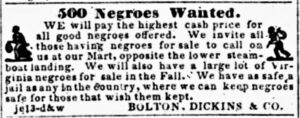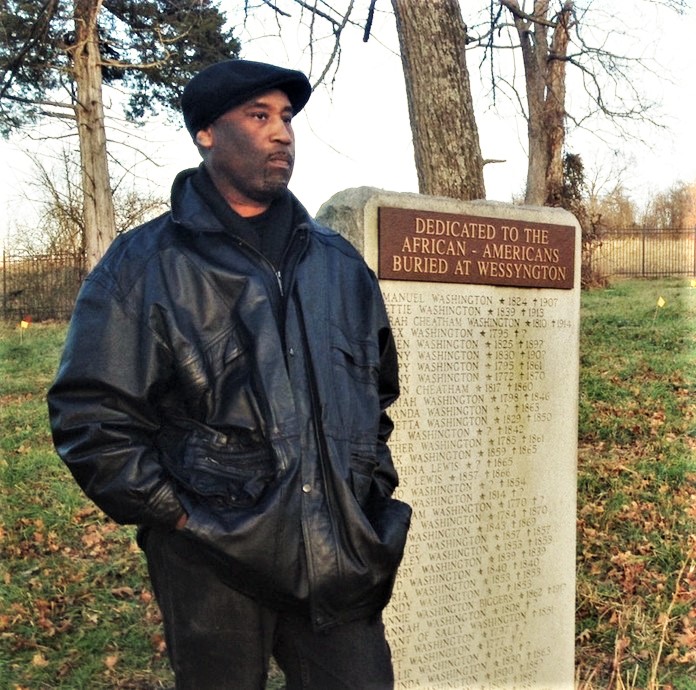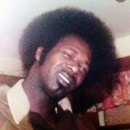This Tennessee History for Kids lesson is the second virtual in-service in the last three weeks to focus on African-American history.
A virtual presentation, Thursday, Feb. 10, 4:45 to 6:45 Eastern Time. All virtual events are FREE. Attending teachers will receive a certificate showing 2 hours of professional development. Members of the general public and students, age 13 and over, are invited to tune in. (This lesson is not recommended for students under eighth grade or 13 years old.)
Slavery at Wessyngton in Robertson County and the Tennessee Slave Trade

Author and presenter John Baker was in 7th grade when he discovered that the photograph of a former slave in a history textbook was his great-great-grandfather. Baker eventually conducted more than 30 years of research on the people who were enslaved at Wessyngton, a massive tobacco plantation in Robertson County, Tennessee. His work resulted in an award-winning book titled,
The Washingtons of Wessyngton Plantation and “Wessyngton Plantation: A Family’s Road to Freedom” a 30-minute film produced by Nashville Public Television (NPT) that aired on July 11, 2014, and nominated for the 30th Annual Midsouth Regional Emmy Award.
Part 1 – Guest presenter and author John Baker: In this presentation, Baker summarizes some of what he learned about slavery, Wessyngton, and his family history.
Part 2 – Presenter Bill Carey: Details how the slave trade worked, how traders worked with banks and the court system, and how it impacted tens of thousands of families. Carey is the author of the 2019 book Runaways, Coffles and Fancy Girls. He reveals many points about the slave trade in Tennessee, such as:
-
- Slave traders operated in Tennessee from Elizabethton to Memphis.
- Because of the nuances of Tennessee law, many slaveholders made trips to Maryland/Virginia to purchase slaves rather than buy them in the state.
- Banks were up to their necks in the slave trade.
- Most professional slave traders got their slaves from chancery court officials, who sold thousands of slaves at courthouses.
- The wealthiest slave trader in America was a Tennessean, a Sumner County resident named Isaac Franklin, who bought more than 15,000 slaves in Maryland and Virginia and sold them in Mississippi and Louisiana.
Click here to register for the Feb. 10 event.
Wessyngton Plantation in Robertson County, Tennessee:
The main house was built in 1815, for Joseph and Mary Cheathan Washington and still stands at 3021 Wessington Rd in Cedar Hill, Tn 37902. Joseph was the second cousin of US President George Washington. The Washington tobacco plantation was recognized as the largest tobacco plantation in the United States. In 1860 the plantation owned 274 slaves. Joseph’s son George and grandson Joseph participated in politics in the footsteps of their uncle and great-uncle Pres. George Washington.
The next Tennessee History for Kids will be on Thursday, Feb. 17. The subject will be
Memphis vs. Nashville: Who has the most interesting history?
Willy Bearden may be the most charismatic speaker about Memphis culture and history around today. TN History for Kids founder Bill Carey wrote Fortunes, Fiddles and Fried Chicken, the best-selling Nashville history book.
In this 2-hour in-service, “Willy and Billy” go head-to-head, each making a case for which town has the most interesting history. Cotton Exchange versus State Capitol. Beale Street vs. Lower Broad. Elvis vs. the Grand Ole Opry. FedEx vs. HCA. Graceland vs. The Hermitage. Titans vs. Grizzlies. In the end, the teachers who attend will vote on who won the great debate. The loser has to leave the state.
Click here to register for the Feb. 17 event.







